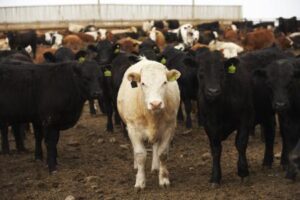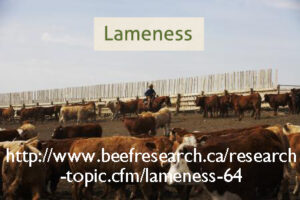5 Ways Cattle Feeders can Prepare for the Fall Run

Before things get too busy with the fall run, take some time to learn more about (or refresh your memory on) some of the ways to promote calf health, feed efficiency and carcass quality in the animals that will be on feed in your lot this year.
1. Know how to spot and treat the different types of lameness
It is common to assume that any animal with a limp has footrot, but many of the other types of lameness don’t respond to the antibiotics used to treat footrot. This article and video have helpful hints on diagnosing and treating many different kinds of lameness so you’re better able to treat the animal properly the first time.
More readings:
- Lameness in feedlots: Easy to see, tough to diagnose
Canadian Cattlemen Magazine pp. 10-11 September 2014 - Toe-tip necrosis still something of a mystery: early detection critical
Canadian Cattlemen Magazine pp. 38-39 September 2014
2. Stop acidosis before it’s a problem
Prevention is the best way to avoid both the economic and animal welfare problems that are associated with acidosis. Although incidences of acidosis may be different than we once thought (see http://www.beefresearch.ca/blog/new-look-at-acidosis-bergen/), acidosis is certainly still a problem in the feedlot industry. This video offers some practical ways to reduce acidosis:
3. Do maintenance on handling facilities to reduce stress and bruising
The most recent national beef quality audit revealed that producers are doing a better job of cattle handing because prevalence of carcass bruising has decreased. See where the rates are at, the cost of bruised carcasses to the industry, and find some recommendations that will help you prevent carcass defects here and in the following video:

